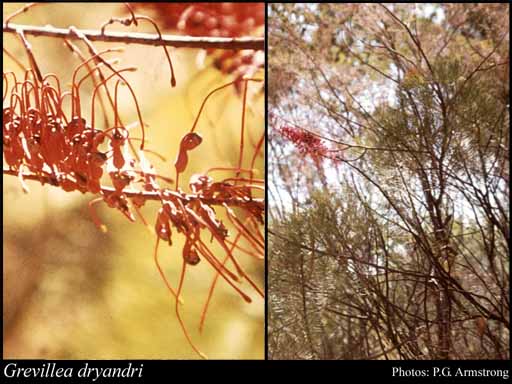- Reference
- Trans.Linn.Soc.London 10:175 (1810)
- Conservation Code
- Not threatened
- Naturalised Status
- Native to Western Australia
- Name Status
- Current
Spreading to erect shrub, (0.3-)0.6-2 m high. Fl. white/red/red-purple/orange-red, Jan to May. Sandstone. Rocky hillsides or ridges.

Scientific Description
Shrubs, 0.5-1 m high; branchlets glabrous or hairy, not glaucous. Leaves alternate, 90-180 mm long, hairy, on the adaxial or abaxial surface, the hairs straight; lamina flat, once divided, pinnately divided, divided to the midrib; lobes 30-120 mm long, 1-2 mm wide, the margins recurved or revolute, exposing the lower surface of the leaf blade or enclosing the lower surface of the leaf blade, forming a groove either side of the midvein. Inflorescences terminal, white, red or pink; pedicels 4-8 mm long. Perianth 12-15 mm long; tepals all free after flower opens, glabrous; ovary glabrous, stipitate, the stipe 8-10 mm long; pistil 40-50 mm long, white, red or pink, pollen presenter oblique, style glabrous. Follicles glabrous, viscid, dehiscent, 7-15 mm long. Flowers in January, February, March, April, May, June or July. Occurs in the Northern (N) Botanical Province(s), in the Northern Kimberley (NK), Victoria Bonaparte (VB), Central Kimberley (CK) or Ord-Victoria Plains (OVP) IBRA subregion(s).
Distribution
- IBRA Regions
- Central Kimberley, Northern Kimberley, Ord Victoria Plain, Victoria Bonaparte.
- IBRA Subregions
- Keep, Mitchell, Pentecost, Purnululu.
- Local Government Areas (LGAs)
- Derby-West Kimberley, Wyndham-East Kimberley.